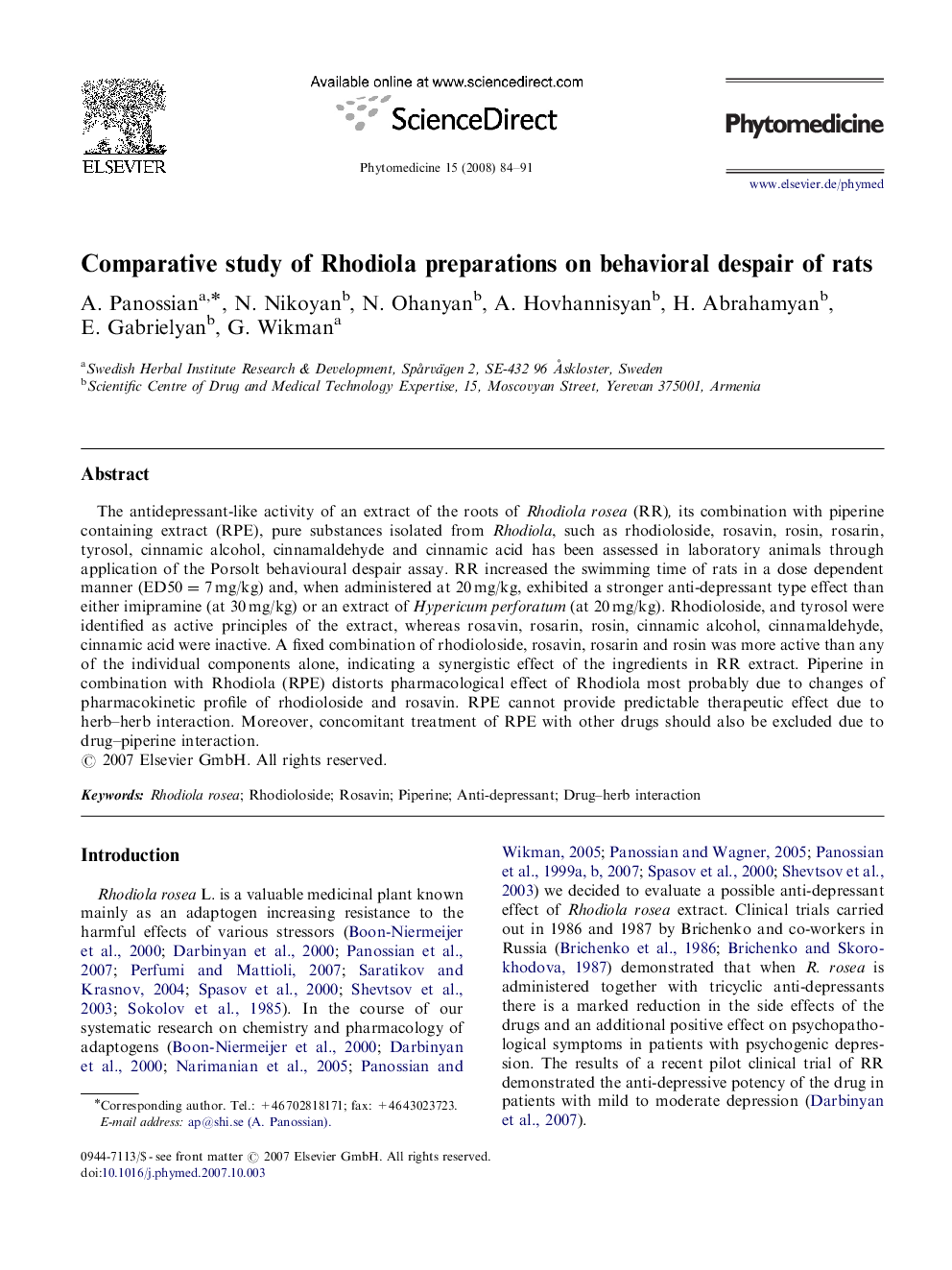| Article ID | Journal | Published Year | Pages | File Type |
|---|---|---|---|---|
| 2497554 | Phytomedicine | 2008 | 8 Pages |
The antidepressant-like activity of an extract of the roots of Rhodiola rosea (RR), its combination with piperine containing extract (RPE), pure substances isolated from Rhodiola, such as rhodioloside, rosavin, rosin, rosarin, tyrosol, cinnamic alcohol, cinnamaldehyde and cinnamic acid has been assessed in laboratory animals through application of the Porsolt behavioural despair assay. RR increased the swimming time of rats in a dose dependent manner (ED50=7 mg/kg) and, when administered at 20 mg/kg, exhibited a stronger anti-depressant type effect than either imipramine (at 30 mg/kg) or an extract of Hypericum perforatum (at 20 mg/kg). Rhodioloside, and tyrosol were identified as active principles of the extract, whereas rosavin, rosarin, rosin, cinnamic alcohol, cinnamaldehyde, cinnamic acid were inactive. A fixed combination of rhodioloside, rosavin, rosarin and rosin was more active than any of the individual components alone, indicating a synergistic effect of the ingredients in RR extract. Piperine in combination with Rhodiola (RPE) distorts pharmacological effect of Rhodiola most probably due to changes of pharmacokinetic profile of rhodioloside and rosavin. RPE cannot provide predictable therapeutic effect due to herb–herb interaction. Moreover, concomitant treatment of RPE with other drugs should also be excluded due to drug–piperine interaction.
